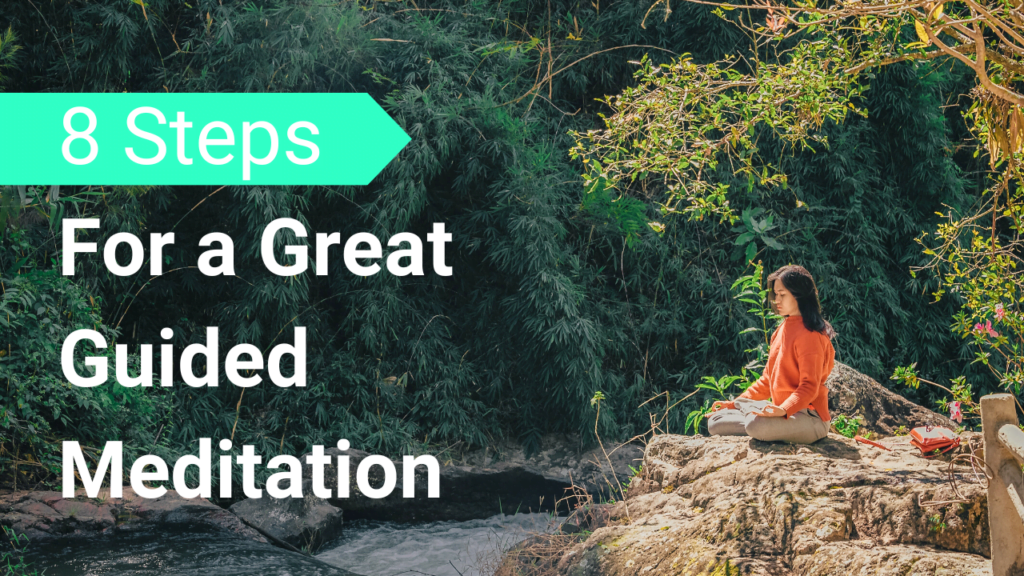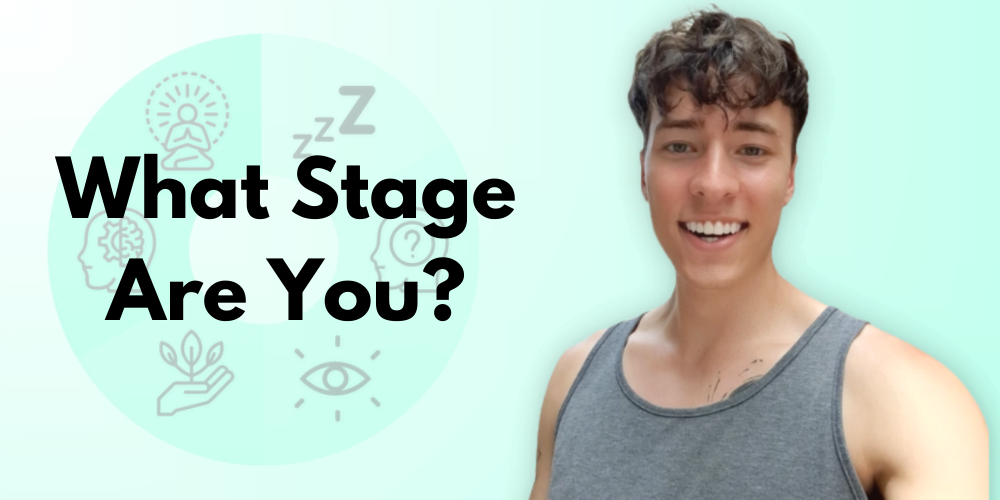How To Lead a Great Guided Meditation
Guided meditation has been shown to provide numerous benefits, such as reducing stress, improving sleep, and boosting mental clarity. However, leading a great guided meditation can be challenging, especially if you’re new to this practice. It’s hard to know exactly what to do for your first time leading a guided meditation and the endeavor can be quite nerve wracking. Even the experienced meditation instructor has more they can add to their routine to improve a meditation. Whether you’re leading a group of people or guiding someone through a personal meditation, here are a few key steps you can take to make the experience as effective and enjoyable as possible. 8 Steps for a great guided meditation 1. Set the stage Before beginning the meditation, make sure the space is quiet, comfortable, and conducive to relaxation. Turn off electronic devices, dim the lights, and play soft, calming music if desired. Check out my meditation playlist on Spotify for your next meditation class here. Meet your students with a smile as they enter the meditation space. Introduce yourself to the class and welcome them to your class or session. Encourage participants to find a comfortable seat and close their eyes. If you’re leading a group meditation, make sure everyone has enough space. Reassure your participants that there is no right or wrong way to meditate and that they may sit or lay in whatever position is most comfortable to them. Your calm and low pressure attitude will allow your participants to begin relaxing as soon as they walk in. 2. Start with deep breathing Begin the meditation by having participants focus on their breath. Ask them to inhale deeply, hold their breath for a few seconds, and then exhale slowly. Repeat this breathing exercise several times, encouraging participants to focus their attention solely on their breath. This deep breathing exercise will help them to relax and prepare their minds for the meditation. You may also ask participants to breath in specific intervals such as the 4-4-4 method that includes breathing in for 4 seconds, holding the breath for another 4 seconds, and exhaling for out for a final 4 seconds. This method can be repeated as many times as you like and can be modified for longer or shorter inhalations and exhalations. 3. Lead a body scan to relax the muscles When leading a guided meditation, it’s important to have the participants physically relax as much as possible. Remember that the mind follows the body, so if your body is tense your mind will find it hard to unwind. Begin leading the body scan from either the top of the head or the tips of the toes and work your way either up or down the body depending on where you started: Take your time during this portion to really make sure your participants are releasing all the tension stored in their bodies. You can take as long or little as you want for this section. I’d recommend giving this section at least 5 minutes, though 8-10 minutes will be more effective especially for longer meditations. 4. Use imagery and visualization techniques One of the most effective techniques in guided meditation is visualization. Encourage participants to create vivid images in their minds, such as a peaceful beach or a lush green forest. Ask them to focus on these images and use their imagination to create a sense of peacefulness and relaxation. You can also guide participants through specific visualization exercises, such as: Visualizations can be a powerful way to get the thinking mind to calm down and focus in a more beneficial way. 5. Encourage self-reflection Encourage self-reflection during the meditation. Encourage participants to reflect on their thoughts and feelings. Ask them to focus on their physical sensations, such as their breath and heartbeat, and to observe their thoughts without judgment. This self-reflection can help them to develop a deeper understanding of their own emotions and improve their ability to manage stress. This is also a great time to ask deep questions. Give your participants a reflective question meditate on such as: “Where in your life do you feel the most joy?” “Where in your life do you feel the most stress?” “What could you let go of in your life right now?” Asking these kinds of questions allow for a guided meditation to get more personal, intimate, and deeper than your average mindfulness meditation session. Check out Positive Psychology’s top self reflection questions here. 6. Allow for a period of silent and solo meditation It’s important to include a period of solo meditation time during a guided session. Encourage participants to do whatever feels most comfortable in these silent periods. This may be meditating, napping, stretching, or whatever feels right to them in this silent time. Silent periods should be included for at least 5 minutes at the end of your guided meditation, however can be extended much longer depending on the length of the meditation session. 7. Ending the meditation End the meditation by encouraging participants to come back to their senses. Have them wiggle their fingers and toes to awaken their bodies. Lead them through a quick stretch to get them out of their meditative state. Have participants open their eyes whenever they’re ready and sit up at their own pace. Don’t rush meditators in this process, rather let them come back at a slow pace that works best for them. 8. Follow up with participants After the meditation, make sure to follow up with participants. Ask them how they felt during the meditation, what they gained from the experience, and if there is anything you can do to improve their experience in the future. Thank them for coming, be available for discussion after the meditation, and send them on their way knowing you just lead them into a deeper and calmer state of mind for a great rest of their day. Additional tips for a Great guided meditation Provide clear instructions When leading a guided meditation, it’s


